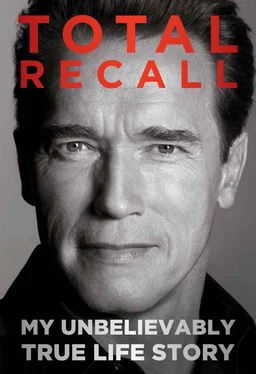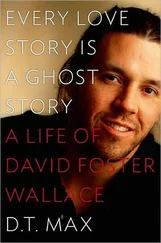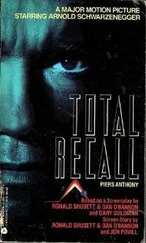I’m a tightwad when it comes to spending taxpayers’ money, but I’m an equally strong believer in investing for the future. I had to educate the legislators about that, especially Republicans, who thought that building was the same as spending. When you spend money, it’s gone. It’s like building a house versus buying a new couch. Build a house, and your investment returns value. Buy a couch, and the minute you take it out of the furniture store, it loses value. That’s why I always say a house, you invest in; furniture, you spend money on.
In fact, building infrastructure is one of only three ways to lock in a benefit from a dollar one hundred years in the future. Number one is to build public works that will last for that long. Number two is to use your dollar to invent something that will still be used in a century. And number three is to educate your children and grandchildren so that they see the benefits of knowledge and educate their own children and grandchildren in turn. Do any of these successfully, and you’ve invested wisely. You may even be remembered for it.
The vision of all the schools, roads, transit systems, bridges, ports, networks, and waterworks that $68 billion would finance was like heaven to me. I told Susan and the staff to go ahead and develop a formal plan. I thought Californians would love the idea of building for the coming generations, and I knew I could sell it.
_
Our decision to focus on a major project right away dispelled fears among the staff and did a lot to restore morale. People perked up and got back to work. And as it turned out, not as many people needed to be replaced as we thought. The staff shakeup proceeded more gradually, and in the end we brought in just six new senior people. As my spokesman, I hired Adam Mendelsohn, a brilliant, imaginative Republican who’d worked with Matt Fong, California’s previous treasurer. For the key operating position of cabinet secretary, I brought in Dan Dunmoyer, a conservative Republican insurance executive with a lot of Sacramento experience. We also brought in a few aides who had a history of working successfully with Susan, led by Daniel Zingale, a Democratic health care expert and a onetime advisor to Gray Davis. He was also Maria’s chief of staff. The team jelled almost instantly and became the only truly bipartisan administration in California history. And they had one vision: mine.
With the gubernatorial election coming up, I also needed new political consultants. I turned to Maria for help. Finding talented people is one of her great skills—she inherited it from her father. And even though she was not as familiar with the talent on the Republican side, she worked behind the scenes to recruit high-powered Republicans who were comfortable with my often-unconventional views. We signed up Steve Schmidt, who had helped shape George W. Bush’s campaign for a second term, and Matthew Dowd, formerly the chief campaign strategist of George W. Bush. Schmidt was pretty blunt about my dismal reelection prospects. At one of the first meetings that we held to discuss them with the senior staff and Maria, he told me the polls showed the voters were mad. They didn’t think they had elected a partisan guy, and they certainly didn’t think they should be doing the deciding for me. But there was a bright spot to his message: people liked me. His advice was: “Be humble. Apologize for making a mistake and stop pulling political stunts like the thing with the wrecking ball.” When Schmidt finished talking, I took a few puffs on my cigar. I think in images, and I needed thirty seconds to visualize who that governor would be. Finally, I told him, “I can play that role perfectly.”
When I stepped to the podium in the statehouse on January 5, 2006, to deliver my State of the State speech, I was a better governor. I wasn’t the bullying, belligerent conservative I’d been portrayed as in the special election. I appeared pragmatic and earnest, and I wanted to make progress.
It made sense to start with an apology: “I’ve thought a lot about the last year and the mistakes I made and the lessons I’ve learned,” I said. “I was in too much of a hurry. I didn’t hear the majority of Californians when they were telling me they didn’t like the special election.
“I have absorbed my defeat, and I have learned my lesson. And the people, who always have the last word, sent a clear message: cut the warfare, cool the rhetoric, find common ground, and fix the problems together. So to my fellow Californians, I say: message received.”
I joked about my approval rating, which by now had sunk further, to the low thirties, and the fact that people had started asking, “Don’t you wish you were back in the movie business?” But I said that I still thought this was the best job I ever had, and that I now stood before them happy, hopeful—and wiser.
I bragged about things for which we all deserved credit, from balancing the budget without raising taxes, to banning soda and junk food in schools. I reminded them of the big things we had accomplished—the workers’ comp reform, the funding of stem-cell research, the refinancing of state debt, new laws to make government more transparent and accessible.
And then I laid out the big numbers: the hundreds of billions of dollars of investment that we would need in order to support California’s growth in the future. As a first step, I presented the ten-year plan my team had scrambled to refine. We’d named it the Strategic Growth Plan. I asked the legislature to put before the voters the $68 billion in bonds we would need.
The headlines in the newspapers the next day were perfect: the governor saying “Build It.” I’d taken a lot of lawmakers by surprise by proposing something so politically inclusive and big. Of course, there was skepticism on both sides, with Democrats saying, basically, “Yeah, sounds good, but show me,” and Republicans saying, “How are you going to pay for this?” Still, so many people from both parties and from labor came to me and said, “Okay, let’s get a fresh start,” I knew I was on the right track.
With the election approaching, we had three messages we wanted to send voters: Arnold is a public servant, not a party hack. He is not afraid to tackle big problems. You are better off today than you were under Gray Davis. We drove home those messages using one strategy: every time we get something passed, we go out and declare victory.
Behind the scenes, we were also doing an incredible amount of fence mending. We needed to make nice with the important groups that my special election had managed to alienate and that had just spent $160 million beating me. In her office, Susan put up a white board that listed all the groups, and Schmidt titled it “The Coalition of the Pissed Off.” It included all public-employee groups, of course: the teachers’ union, firefighters, nurses, and prison guards, as well as all the major Indian gaming tribes, and on and on. Also on the list were groups that usually lean Republican, such as police chiefs, sheriffs, manufacturers’ associations, and small business associations.
In fact, with the single exception of the California Chamber of Commerce, every important political interest group in California was planning to either not support me or work actively to defeat me. And, as I’d learned the hard way, they had the power to block initiatives and stop change. We needed to choose our battles and our opponents if we were to get anything done.
One by one, we set out to work with our friends and neutralize our opposition. It helped enormously that California’s economy was finally growing again, so billions in tax revenues were unexpectedly swelling the treasury. We settled an old lawsuit with the teachers, and we met repeatedly with the fire chiefs, police chiefs, and sheriffs to ease their concerns about pensions. In some cases, the fence mending took months. Key unions had contracts coming due, so we took our time with negotiations, knowing that the unions would watch my growing strength in the opinion polls and decide that there was a good chance I’d be reelected, and that they might have to deal with me for four more years.
Читать дальше












